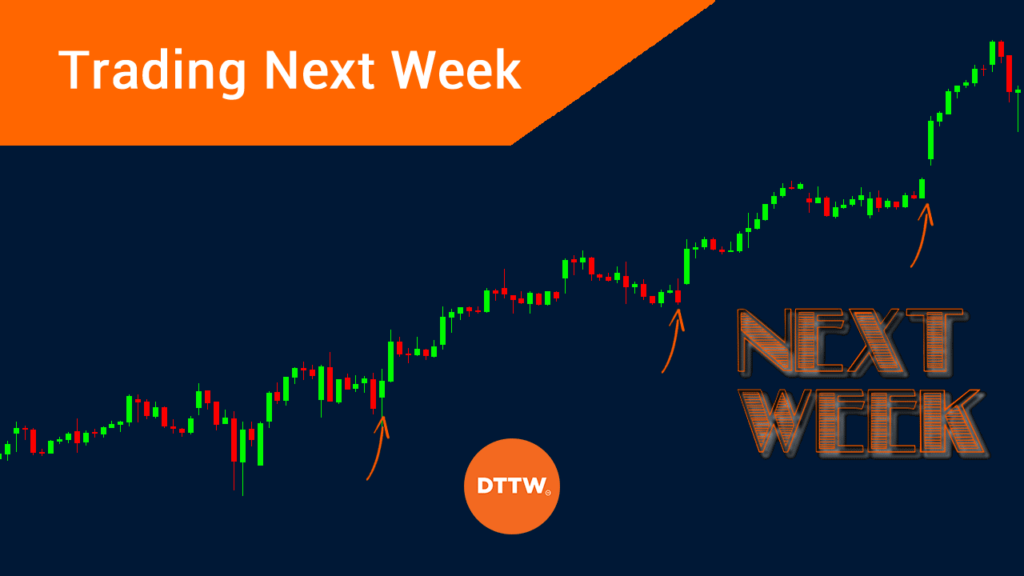Being well prepared can help you a great deal in your trading career. One way of being prepared and organized is getting ready for the next month, week, and day.
Of course, we can’t expect to prepare everything beforehand, because a good day trader must know how to seize the opportunities of the moment and leverage market volatility.
But at least getting ready for the week defining our goals, the risk/reward ratio and deciding more or less how much time to dedicate to trading (to avoid the dreaded overtrading) is definitely wise.
In this article, we will look at the best strategy to set up for the next trading week.
Reviewing your trading day
Before you look at the next trading day, it is necessary that you take time to review your current day. This means that you should take time to review the news and events that happened and how you executed them. Also, it means looking at some of your biggest mistakes of the day.
As we have written before, the best approach of doing this is to always use a trading journal. A journal is a relatively simple tool where you write all your trades for future references. The document lists trades, explains why they were opened, and the loss and profit of each.
Therefore, we recommend that you plan for your next trading week by looking at your weekly’s trades and identifying some of your mistakes day by day. Also, review all the events that happened during the day/week and reflect on their impact on the market in the following day.
You should do all this as you weigh your performance against your strategy.
Use of calendars
The next step in preparing for the following week is to make use of calendars. A calendar is a tool that lists the important scheduled events in a day or a week. We have looked at some of these calendars before. Some of the most popular ones are:
- Economic calendar – This calendar lists all economic events that are scheduled in a certain period of time (a week, in our case). These events include numbers like employment, PMI, production, and inflation. They also include interest rates and political speeches. These events are also global, meaning that the calendar will have events from developed, emerging, and developing countries.
- Earnings calendar – This calendar lists most upcoming earnings from top companies. In most cases, the calendar will mention the company, time of the event, and expectations from analysts.
- IPO calendar – This calendar lists most of the upcoming initial public offering (IPO). You can use this calendar to know companies that are about to become public.
- Holiday calendar – This is a calendar that shows the top holidays in most countries like the US, China, and Australia.
- Splits calendar – This is a calendar that shows companies that are planning to split their shares.
- Dividends calendar – You should check out this calendar for information on when companies will release their dividends.
- Expiration calendar – This is a calendar that shows companies whose lock-up expiration is about to happen.
We recommend that you look at these calendars every Friday as you prepare for the coming week. You should then look at the calendars every weekday to prepare for the following trading day.
Creating a watchlist
Another strategy to prepare for the next trading day is to have a watchlist. A watchlist is a document that illustrates all companies, currency pairs, and commodities that you will be watching the following day. It is an important document that is derived by looking at news and the economic calendar. Some of the top news platforms to use are Bloomberg, Wall Street Journal (WSJ), and CNBC.
You can also create this list by looking at activities in extended hours. A watchlist should be short and concise since its goal is to guide your next trading day.
Further, you can spend some time watching at financial television like CNBC and Bloomberg for trade ideas. Also our TraderTv Partner provide a watchlist with morning gappers.
Relax
If you are a full-time day trader, it is always important to take your time and rest. Studies show that the most successsuful people in many industries spend a substantial amount of time resting and sleeping.
The others tend to experience burnout by overworking themselves. This will also help you avoid falling into one of the most dangerous psychological traps: F.O.M.O.
Therefore, you should do the best to ensure that you have a good work and life balance. As such, after you complete trading and do the above exercises, you should rest and spend a lot of time with your family members. Also, at times, you can allocate time to hang out with your friends. Doing all this will help to keep you relaxed, avoid burnout, and have a balanced life.
Other activities you could do are watch movies, listen to music or podcasts, bond with your children, and read books on various subjects.
»What Traders Can Do In Their Free Times?«
Summary
Setting up for the next trading week can help you become a better trader. Indeed, it is well-known that traders at leading institutions spend some time every day reviewing their plans and preparing for the following day. We recommend that you do the same to.
External Useful Resources
- A Day in the Life of a Day Trader – The Balance
